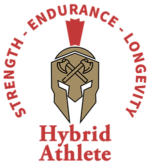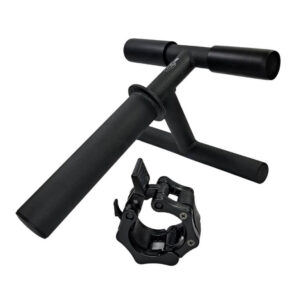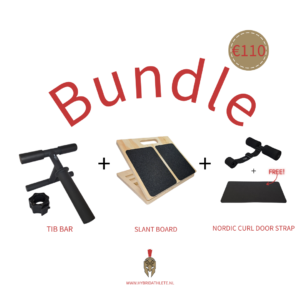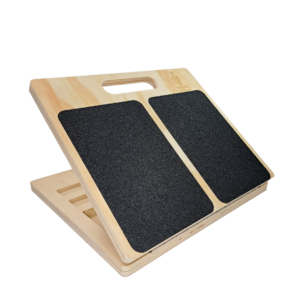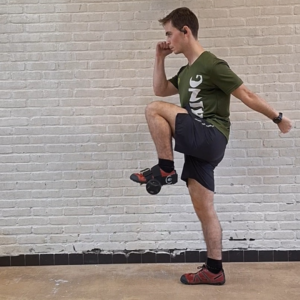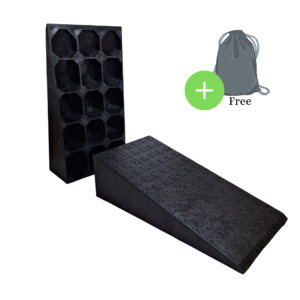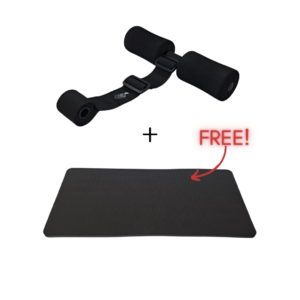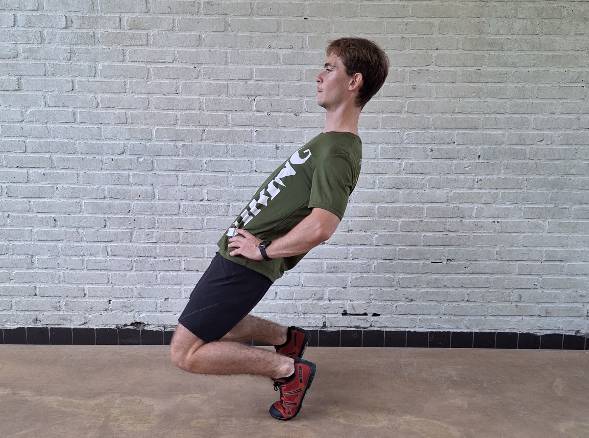
Should I do KOT exercises on leg days? Can I do knees over toes stuff often? How do I even start a knees over toes program?
If you ever stumbled upon a dilemma like this, we got you covered. In the following blog, let’s talk about starting a KOT program, and let’s go through some simple exercises (with progressions).
We already covered the things you should expect when you start KOT training, so make sure to check that out as well.
Let’s get into it.
Table of Contents
Before We Begin
Before we get into the specifics of starting a knees over toes program, let’s get a few things out of the way:
- Never work through pain. A lot of new athletes (including hybrid athletes) out there think that pain = gains when it comes to KOT mobility. Some tightness is ok, though.
- Know your ROM (range of motion) limits, and go over them ever so slightly. To break a mobility plateau, you have to know where your limits are first.
- Some knees over toes program exercises look fairly easy. Try not to overdo it when it comes to training volume.
Now that we got that out of the way, let’s see how we can get you to start your own knees over toes program.
What do I need for a Knees Over Toes Program?
Essentially, if you are a beginner, you can achieve almost everything without any special KOT equipment. Having a slant board for extra versatility wouldn’t hurt, however.
But, once your joints and muscles get used to the simple KOT program, it would be great to have at least a tib bar or a solo tib bar at your disposal. Of course, we would be insane not to recommend you take a look at our very own Hybrid Athlete exercise gear.
To summarize, as a beginner, the best equipment you could use is patience. But once you overcome the entry-level exercises, some gear is necessary to progress.
Beginner Level Knees Over Toes Program
1. Backward Walking
There’s no easier way to allow your knees to go over your toes than by walking backward, as long as you don’t do it in small steps.
Do this exercise in 10-minute increments, and once it gets easy, you can try it on a treadmill by pushing the track with your feet. The treadmill needs to be off for this.
Here are a few benefits of backward walking, aka retroambulation:
- Better engagement of the knee, including some deep-tissue muscles
- Strengthening of the patella
- Posture correction
For progressions, check below.
2. KOT Split Squat
The KOT squat, aka ATG split squat, is similar to a front lunge, only it pushes you to your ROM and back. This exercise is an essential part of any knees over toes program, because it allows you to reap several crucial benefits:
- Stronger and more controlled dorsiflexion and general ankle mobility gains
- Knee activation without the extra strain
- Hip flexor stretching and strengthening
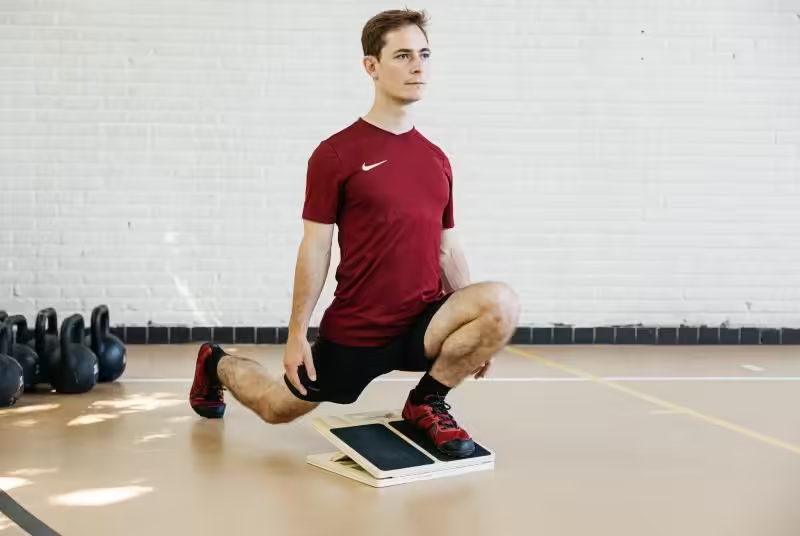
3. FHL Calfe Raise
The flexor hallucis longus, or the FHL muscle is a calf muscle on the posterior side of your shin. It plays a crucial role in running, jumping, and landing. And that’s why FHL calf raises are an easy choice for a beginner knees over toes program.
Here’s what to expect when you start ding FHL calf raises:
- Increase in jumping power
- Stronger and more controlled plantar flexion of the ankle
- Lower risk of injuries (e.g. ankle twists and sprains)
4. Sissy Squat
Now, no matter what you heard about the difficulty of the sissy squat (named after King Sysiphus), the first part of it, the descent, is not that hard, while it does bring a lot of benefits. As long as you have some cushioning to fall onto, you’ll be fine.
The benefits of the sissy squat are many, even if you do just the first part:
- Quad and hip flexor synchronization and strengthening
- Improved balance and proprioception
- Strengthening of the lower abdominal muscles
Knees Over Toes Program Progressions
After you get yourself comfy and familiarized with your beginner’s knees over toes program, you should consider progressing into more challenging KOT exercises.
1. Reverse Sled Pull
This is a natural step forward (or backward rather) to backward walking. The reverse sled pull activates the while foot-ankle-knee-hip kinetic chain, all while developing the finer muscles of the lower body.
Reverse sled pulls are also an essential part of any solid knees over toes program, and they bring the following benefits to the table:
- Knee joint strength and protection
- Enhanced blood flow, especially in the lower body
- Shin muscle gains
If you don’t have a sled, don’t worry, we’ve got you covered:
2. Seated Good Mornings (with a barbell)
This hip-hinge-dominant exercise will surely improve your squat biomechanics, thanks to the activation of erector spinae in your lower back, as well as the posterior muscle chain in your legs. If you are new to seated good mornings, start without any load on your back until you get the hang of it.
Here’s what you can expect when you implement seated good mornings into your knees over toes program:
- Mobility and flexibility in the hamstrings
- Lower back muscle strength boost
- Strong core activation and development
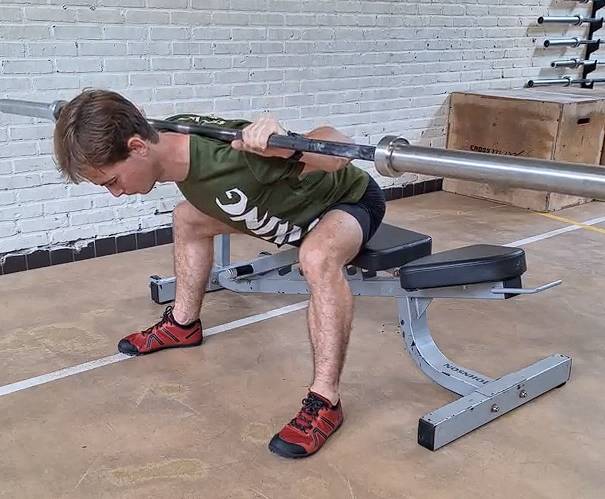
3. Tib Bar Tib Raises
The tibialis anterior muscle can be targeted throughout a wide range of tib raises, but nothing beats the progression that a tib bar can give you.
A tib bar, or a solo tib if you like unilateral exercises more, is there to help you with tibialis anterior progressive overload. It holds up to 70 kg of regular gym plates, and offers more exercises than just the tib bar tibialis raise.
The benefits of using a tib bar:
- Improved dorsiflexion of the ankle
- Increase in ankle mobility
- Enhanced foot stability
4. Nordic Ham Curl
Lastly, we have the Nordic hamstring curl, which became a rite of passage for athletes all around the globe (yes, thanks to its difficulty). This exercise is as useful as it is hard, since it provides not only a good ham pump – it builds knee longevity, and bulletproofs the whole posterior chain.
The Nordic ham curls are good for:
- Developing core muscles, especially the lower part of the abdomen
- Fixing knee instabilities
- Building the muscles in the posterior chain, both large and small muscle groups
Make sure to check out our Nordic vs reverse Nordic comparison HERE.
How Often Can I Do Knees Over Toes Exercises?
If you are just putting together a fresh knees over toes program, the rule of thumb is to match it with your leg days. If you do lower-body training only once a week, you should consider doing KOT exercises more frequently, up to 3 times a week.
Start Your Own Knees Over Toes Program And Do It The Right Way
So, there we have it, 4 simple and 4 not-so-simple exercises to help you kick off your own kees over toes program.
Remember:
- Start slow and don’t overdo it with high-rep low-intensity beginner exercises
- Never work through pain
- Once you hit your limits, get some high-quality knees over toes equipment to progress further
Good luck on your journey to longevity.
Get The Best KOT and Mobility Exercise Equipment At Our Shop:
Above all, a storyteller. Then comes marketing, branding, writing music, powerlifting, and woodworking.
